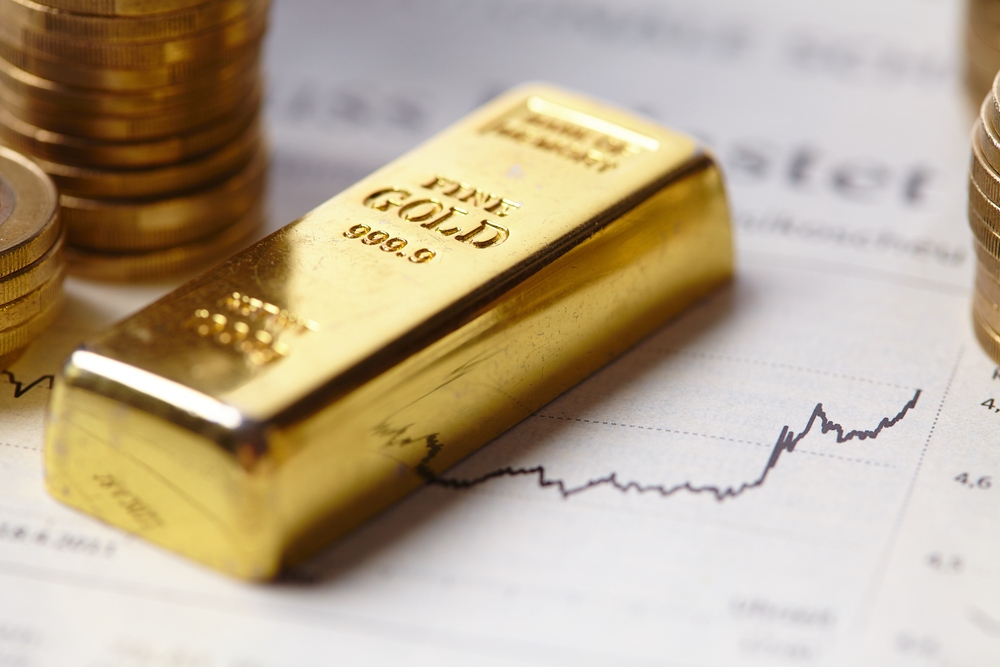Gold exchange-traded commodities (ETCs) have shone brightly in recent days as the collapse of Silicon Valley Bank (SVB) and UBS’s acquisition of Credit Suisse saw US Treasury yields fall and gold prices flirt with all-time highs.
The precious metal briefly traded as high as $2,009 an ounce on Monday morning, up from $1,814 on 9 March and within touching distance of its $2,070 peak in August 2020, according to Gold Price data.
ETCs tracking the metal responded accordingly, with the $15.4bn iShares Physical Gold ETC (IGLN) and $3.2bn Xtrackers Physical Gold ETC Securities (XGDU) both rallying 5.7% over the past week while the $572m WisdomTree Core Physical Gold ETP (WGLD) returned 6.1%, as at 17 March.
Enjoying even stronger form were gold mining equity ETFs, with the $73m Market Access NYSE Arca Gold Bugs UCITS ETF (GOLB), $156m L&G Gold Mining UCITS ETF (AUCO) and $789m VanEck Gold Miners UCITS ETF (GDX) surging 12.4%, 11.8% and 10.3% over the same period, respectively.
While more muted than the product class’s standout performance, Europe’s most popular gold ETCs also collected new assets with BlackRock’s IGLN adding $71m over the past week while the continent’s largest ETC, the $15.2bn Invesco Physical Gold ETC (SGLN), saw $228m inflows.
Ole Hansen, head of commodity strategy at Saxo Bank, attributed the metal’s performance to investors hunting for a safe haven after the collapse of the US’s 18th largest bank SVB raised questions about broader risk in the financial system.
After systemically important Credit Suisse lost more than 97% of its value since all-time highs by Wednesday last week, even a deal for rivals UBS to acquire the failing bank was brokered by the Swiss government has yet to calm investors’ nerves.
Hansen said: “Heading into the latest crisis, precious metals were dramatically under owned by investors who had been heavy sellers during the February correction.
“ETF holdings in gold jumped the most in a year last week but at 2,871 tons it remains almost 450 tons below the 2022 peak while speculators in futures cut their net long positions by 78% during a five-week period to 7 March.”
Looking ahead, he noted the meeting of the Federal Open Market Committee (FOMC) would be among the most significant and “the most difficult to predict in years”, with markets now expecting the Federal Reserve to reconsider its previously hawkish monetary policy campaign.
After the Fed hiked its funds rate at the fastest pace since Paul Volcker’s tenure as chair in the 1980s, the US Treasury yield curve also posted its deepest inversion in four decades, with two-year US Treasuries recently boasting yields over 5%.
However, the events of the past fortnight saw 100 basis points wiped from short-dated US Treasury yields within a week, with markets now almost disregarding the possibility of another 50-basis point rate hike altogether.
Against this backdrop, other assets deemed as safe havens are able to flourish, with gold’s price tending to move inversely with US Treasury yields.

Source: Bloomberg Intelligence, Reuters
Nitesh Shah, head of commodities and macroeconomic research at WisdomTree, said he expects gold to hold the recent ground it has taken as “turbulence” prevails but warned the metal could be the position in investor portfolios that gets liquidated if market conditions worsen.
“The key short-term risk for gold at this stage is not market confidence recovering quickly but a broader market meltdown that could drive gold selling to raise liquidity for meeting other obligations – such as margin calls,” Shah said. “In that scenario, gold is likely to recover in time as other investors will buy the metal to shore up their defensive hedges.”








